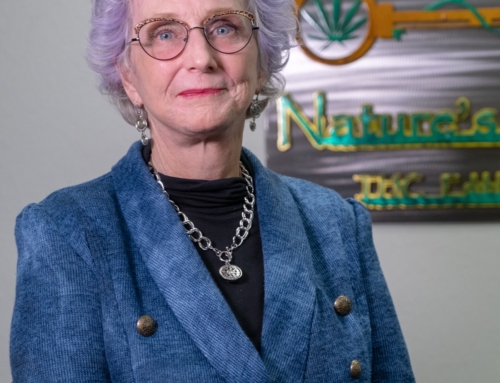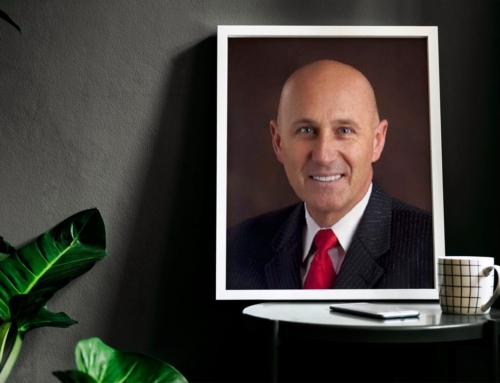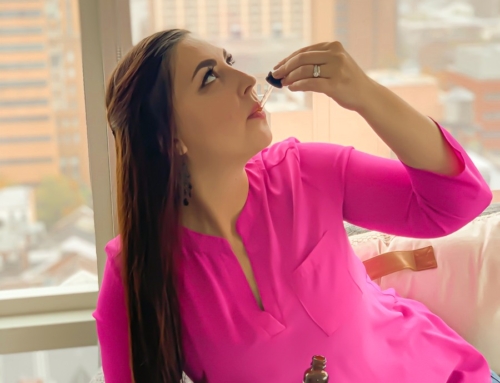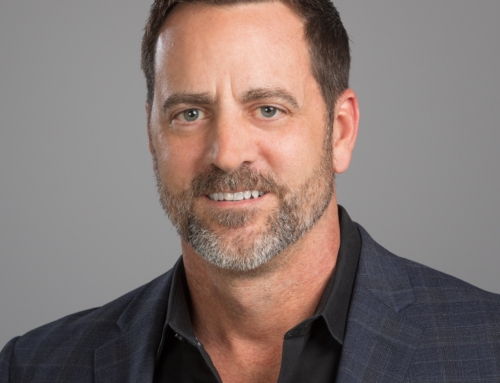As a pioneer and veteran in the cannabis industry for over 20 years, Justin Calvino is the cofounder of the Emerald Exchange and the founder of the Mendocino Appellations Project.
The Emerald Exchange is a platform focused on supporting small batch craft sungrown cultivators from the Emerald Triangle, which currently operates a retail pop-up for craft cannabis products in licensed retailers throughout California.
As a longtime Mendocino resident and farmer turned business owner, Justin continues to create avenues for small batch and Artisanal cannabis farmers to enter the marketplace.
Justin is working with farmers who have been growing cannabis for decades, identifying what makes their strains unique to the area to preserve craft cannabis and to create a statewide appellation system that truly highlights and identifies key markers and quality derived from various practices and cultivars throughout the state.
Thank you so much for doing this with us! Can you share with us the story about what brought you to this specific career path?
I would have to say running away from home at 16 to live on the streets of Haight Asbury. I would catch a bus from San Francisco to Santa Cruz mountains or from Santa Cruz to Arcata and all points between searching out northern California’s finest cannabis. Every day was an interesting story!
Can you share the most interesting story that happened to you since you began leading your company?
Since I started Emerald Exchange it has been the legalization. The idea that we would take a group of small batch cultivators and mom and pops from Northern California with decades of experience in either the criminal or medical cannabis marketplace and create a pathway for them to participate in a structure that is being regulated.
Are you working on any exciting projects now?
Currently I am working on the California Appalachian system and talking to small farmers across the state about developing appellations maps. Once the system is created, we will be able to showcase the finest cannabis in the world along with showcasing California’s diverse and rich cannabis heritage.
None of us are able to achieve success without some help along the way. Is there a particular person who you are grateful towards who helped get you to where you are? Can you share a story?
I would have to say my biggest influence in business and my biggest fan was my ex mother-in-law Anne Kilcrease. She believed in me every step of the way and was always there to encourage my success, as well as counsel my failures.
The first time I ever did a project over at her house, she would follow me around with a broom in the shop cleaning up my mess as I went along. She would say – “I don’t know how you can focus without a clean workspace,” and I would say “wait till I’m done.” Still to this day I now clean as I go.
This industry is young dynamic and creative. Do you use any clever and innovative marketing strategies that you think large legacy companies should consider adopting?
I find difficulty in believing there are many large legacy companies. Mostly the companies coming in are large well-funded companies.
As for creative edge in the marketplace, I believe distinctions created through personal craft will help the small batch cultivators and the true heritage farmers in California succeed. Also, the development of a healthy appellations of origin system!
Can you share 3 things that most excite you about the Cannabis industry? Can you share 3 things that most concern you?
I believe the most exciting thing about the current market is that we are seeing a larger audience, a sacred plant spirit, and true medicine.
I also believe that we are getting to create a system that honors craft cannabis and this system can be replicated into other industries, adding a craft component to our Mono cropped, over mechanized and capitalist reality.
Furthermore, I am excited that a new group of conscious entrepreneurs are entering into a corporate space that will impact California business for decades to come.
Can you share your “5 Things I Wish Someone Told Me Before I Started Leading a Cannabis Business”? Please share a story or example for each.
I wish I would’ve learned how to subtract instead of just add. I keep on adding things and don’t really know how to take them away, and that seems to be the game we play now.
-Balance your equations: In business for me it’s always been about addition. Addition of team members, addition of resources, addition of property, and so much of the cannabis business is actually about subtraction – meaning that more isn’t always better in creating balance. I’ve learned that it’s important to think out a full strategy accounting for not just the biggest response to a need, but the most strategic.
-Results are rarely immediate. In the corporate world, if someone says they’ll get you something in a week, it usually means 1-3 months. If they say 1-3 months, it could take a year. On the other hand, when they want something they want it yesterday. Building a brand takes time, return on investment takes time and there’s a big difference between acting in urgency and rushing. Patience is essential in the ebb and flow of deal making and relationship building. Knowing that now allows me to be smarter with my investments and timelines, which could also be described as not counting my chickens before they hatch (Farmers love farm analogies 😉
-Mediocrity is everywhere. The only barrier to entering the cannabis space at this time is money. If someone has a lot of it, even if they have no experience or understanding of the plant and the community around it, they can jump in. There is a code for people who were in cannabis before the ‘legalization’ of it. That code doesn’t resonate with most of the new entrants into the space, so it’s difficult to create meaningful relationships with people who don’t understand that history, because they are primarily focused on making money as opposed to the deeper value of the plant.
-Business is business, even in cannabis. People will stop at nothing to create value where there is none, and we see this in the commodity production of our food sources, and now we are seeing it in cannabis. While we have the opportunity to envision and build a more sustainable version of business with the community focused ethos of small batch cannabis, capitalism is already rearing its ugly head in favor of large scale extractive agricultural practices. There’s a a 40 acre grow in Santa Barbara that by itself can displace hundreds of small farmers, many of whom have been left behind by the licensing process. If big money had its way, this would be what the future of cannabis would look like, while we’re fighting to support the survival of our community.
-Life will never be the same. I moved to Northern California to create my own vision of utopia, and the process of legalization has destabilized many of our community’s visions for our lives and our futures. Small cannabis farmers didn’t get into the business to build brands and compete with multinational corporations. The journey I’ve had to take has forced me away from my family and the life I chose to follow the market where it is going, and it’s going places no one ever imagined. I wish I knew how that Utopian vision could sustain itself while also creating value in the world of business as it is.
What advice would you give to other CEOs or founders to help their employees to thrive?
I would recommend studying supply chain dynamics – understanding seed to sale is very important. The company will have an edge when employees are able to tell the story fully. Employees need to understand the dynamics between farmer and distributor, distributor and manufacturer and manufacturer to retail. Everyone should have direct customer access at some point. Don’t just rely on data – get your own and have all employees interact with customers.
You are a person of great influence. If you could inspire a movement that would bring the most amount of good to the most amount of people, what would that be? You never know what your idea can trigger. 🙂
A healthy Appellation system. Protecting the IP of individual farms with margins going directly back to the farmer and for family farms to produce at traditional rates of scale while capturing the same margins. This allows for family farms to thrive which would protect the land forever. The legacy of the soil belongs to the furthest generation.
What is the best way our readers can follow you on social media?
https://www.instagram.com/emeraldexchangeca
https://facebook.com/theemeraldexchange/
https://emeraldexchangeca.com
info@emeraldexchangeca.com
This was very inspiring. Thank you so much for joining us!









![“The potential to help people [in this industry] is enormous, but there’s still so much to learn.” – Ramon Alarcon, Witi](https://cf.lakesideremedy.com/wp-content/uploads/2020/12/1thj5ekUyxQ69iLz1JJyODg-scaled-e1607882756286-500x383.jpeg)
